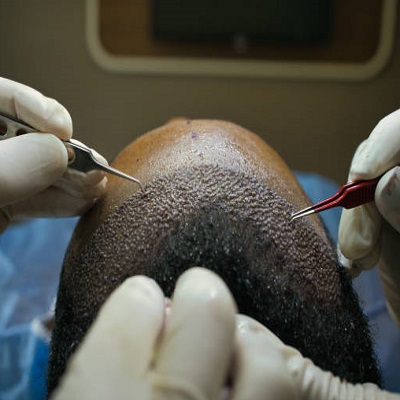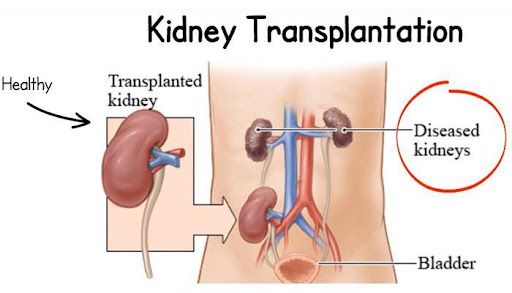Hair loss can significantly impact a person’s appearance and confidence, often prompting individuals to explore long-term solutions like hair restoration. Hair transplantation has become one of the most effective methods to restore lost hair, offering natural-looking results with permanent benefits. Patients seeking a Hair transplant in Islamabad often inquire about the different methods available, as each technique varies in procedure, recovery, and outcomes. Understanding the various types of hair transplant procedures helps individuals make informed decisions aligned with their goals. Clinics like SKN Cosmetics clinic offer a range of advanced options tailored to meet individual needs and hair loss patterns.
1. Follicular Unit Transplantation (FUT)
Also known as the strip method, FUT is one of the oldest and most traditional forms of hair transplantation. In this procedure, a strip of skin containing hair follicles is surgically removed from the donor area—usually the back of the scalp. The strip is then divided under a microscope into individual follicular units, which are implanted into the recipient area.
Advantages:
-
Allows for the transplantation of a large number of grafts in one session
-
Higher yield of hair follicles from the donor site
-
Often more affordable than other methods
Disadvantages:
-
Linear scar remains in the donor area
-
Longer recovery time compared to other techniques
-
Post-operative discomfort may be more significant
FUT is suitable for patients who require a large number of grafts and are not concerned about wearing their hair very short.
2. Follicular Unit Extraction (FUE)
FUE has gained widespread popularity due to its minimally invasive approach. Unlike FUT, FUE does not involve the removal of a skin strip. Instead, individual follicular units are extracted directly from the donor area using a micro-punch tool and then implanted into the balding areas.
Advantages:
-
No linear scar—just tiny dot scars that are hardly visible
-
Faster healing and minimal post-operative discomfort
-
Suitable for people who prefer short hairstyles
Disadvantages:
-
Time-consuming, especially for large transplant sessions
-
Slightly lower yield of follicular units compared to FUT
-
More expensive than FUT in many cases
FUE is ideal for individuals with smaller balding areas or those who want a less invasive option with minimal visible scarring.
3. Direct Hair Implantation (DHI)
DHI is a modified form of FUE and involves the use of a specialized implanter pen (known as the Choi Implanter) that allows for simultaneous extraction and implantation. Hair follicles are implanted directly into the scalp without the need to create recipient site incisions beforehand.
Advantages:
-
High precision and control over angle, direction, and depth of implantation
-
Reduced handling of follicles improves survival rate
-
Minimal bleeding and faster recovery
Disadvantages:
-
More expensive due to the advanced tools and time required
-
Requires high technical expertise
-
Limited availability in some clinics
DHI is best suited for patients looking for a high-density result, especially in the hairline and frontal scalp area, and who prioritize precision.
4. Robotic Hair Transplantation
Robotic systems such as ARTAS are used to assist in the FUE method. These systems utilize advanced algorithms and robotic arms to identify and extract the best grafts from the donor area. The precision of robotic extraction minimizes trauma and maximizes graft viability.
Advantages:
-
Enhanced accuracy and efficiency
-
Reduces human error
-
Consistent results with minimal tissue damage
Disadvantages:
-
High cost due to robotic equipment
-
Limited customization compared to manual procedures
-
May not be available in all regions
Robotic hair transplants are suitable for patients who desire precision and consistency, and who are willing to invest in the latest technology.
5. Stem Cell Hair Transplant
Stem cell hair transplant is an emerging technique that involves harvesting hair follicle stem cells from the donor area and injecting or implanting them into the recipient area to stimulate new growth. Unlike traditional methods, this does not involve the transplantation of full follicles.
Advantages:
-
Potential for hair regeneration in both donor and recipient areas
-
Minimal invasiveness and scarring
-
Useful for early stages of hair thinning
Disadvantages:
-
Still under research and not widely available
-
Long-term effectiveness is not yet fully established
-
Can be costly and experimental
This option is promising for patients looking for innovative, regenerative approaches, particularly in the early stages of hair loss.
6. Combination Procedures
Some patients benefit from a combination of techniques, such as FUT for bulk grafting followed by FUE or DHI for refinement in high-visibility areas like the hairline. This hybrid approach maximizes graft yield and improves aesthetic outcomes.
Advantages:
-
Personalized treatment for optimal results
-
Maximizes the utility of the donor area
-
Tailored to individual scalp conditions and goals
Disadvantages:
-
Requires multiple sessions and expert planning
-
May increase overall cost
-
Longer treatment timeline
Combination methods are suitable for patients with extensive hair loss who want a customized solution that delivers both coverage and detail.
7. Body Hair Transplant (BHT)
When the scalp donor area is insufficient, hair follicles can be extracted from other parts of the body such as the chest, beard, or back. These follicles are then transplanted to the scalp to restore density.
Advantages:
-
Expands donor pool for patients with limited scalp hair
-
Useful for repair cases and advanced balding
Disadvantages:
-
Variable growth patterns and textures
-
Lower survival rates of body hair follicles
-
More complex and time-consuming
BHT is often used as a supplementary technique and is especially useful in reconstructive cases or corrective procedures after previous failed transplants.
Factors to Consider When Choosing a Procedure
The right hair transplant technique depends on various factors, including:
-
The extent of hair loss
-
The quality and quantity of donor hair
-
Budget and time availability
-
Personal expectations and styling preferences
-
Medical history and scalp health
A thorough consultation with a qualified hair restoration specialist is essential to determine the most appropriate procedure.
Conclusion
The field of hair restoration offers multiple procedures, each with its own set of advantages, limitations, and suitability for specific hair loss conditions. From traditional FUT and advanced FUE to precise methods like DHI and robotic-assisted techniques, understanding your options is crucial before making a decision. If you’re considering a Hair transplant in Islamabad, an in-depth consultation will help identify the most suitable procedure based on your unique goals, donor hair availability, and long-term expectations.



